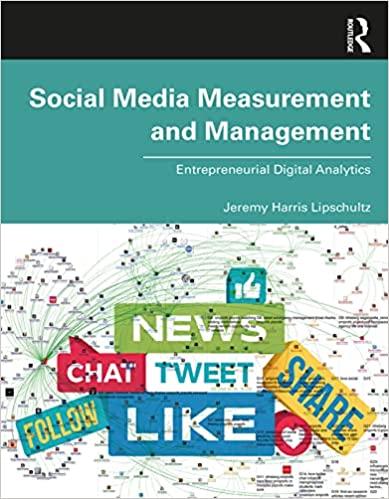Question
Read the reading listed below and then answer the questions in full sentences listed below the reading. Regardless of what youre giving us, were dying
Read the reading listed below and then answer the questions in full sentences listed below the reading.
Regardless of what youre giving us, were dying by e-mail, an executive told Jamie McLellan, a CTO at an advertising agency. McLellan invested in many different collaboration tools with the goal of helping the employees work more efficiently. Many organizations have taken this same approach through open-plan offices, such as those in many knowledge-intensive companies like Facebook, which has a notorious 430,000-square-foot open office space. Among these tools, employees can use them to create internal team websites, chat, and share documents. However, almost everyone tended to stick to what they knew and were used to using: e-mail, with the employees sending and receiving between 3,000 to 5,000 e-mails per month.
This influx of various collaboration mechanisms has led to a real problem for organizations: collaboration overload. According to data spanning two decades, employees spend about 50 percent or more of their time collaborating with others. Although this may seem beneficial on the surface, this pattern has many drawbacks that are not readily apparent. For one, nearly 20 to 35 percent of collaborations that actually add value come from only 3 to 5 percent of employees. Unfortunately, people become known for their capabilities and willingness to help, and thus the scope of their positions increases in a phenomenon known as escalating citizenship. Another major problem with collaboration overload is that time and energy spent collaborating with others (rather than working on ones work) translates to depleted personal resources.
Collaboration overload can have drastic effects on decision making within organizations. By increasing the number of collaboration tools and therefore increasing communication complexity, the number of people involved in decision making increases exponentially, requiring more meetings, e-mails, and instant messages. Although there is much evidence that suggests we may need to tone down the richness, variety, and depth of our communication due to how little deep work can get done, there seems to be an escalation of commitment to the cult of collaboration, with not many offices agreeing to become at least partially unplugged.''
Questions:
1. In what ways do you think collaboration overload can have an impact on decision making?
2. What biases do you think play into managers continued use of collaboration tools and modes?
3. How does collaboration overload (e.g., requiring employees to use multiple collaboration mechanisms or become employed in open-office environments) compare to the three ethical decision criteria (i.e., utilitarianism, liberties/rights, and deonance) discussed in this chapter?
Step by Step Solution
There are 3 Steps involved in it
Step: 1

Get Instant Access to Expert-Tailored Solutions
See step-by-step solutions with expert insights and AI powered tools for academic success
Step: 2

Step: 3

Ace Your Homework with AI
Get the answers you need in no time with our AI-driven, step-by-step assistance
Get Started


